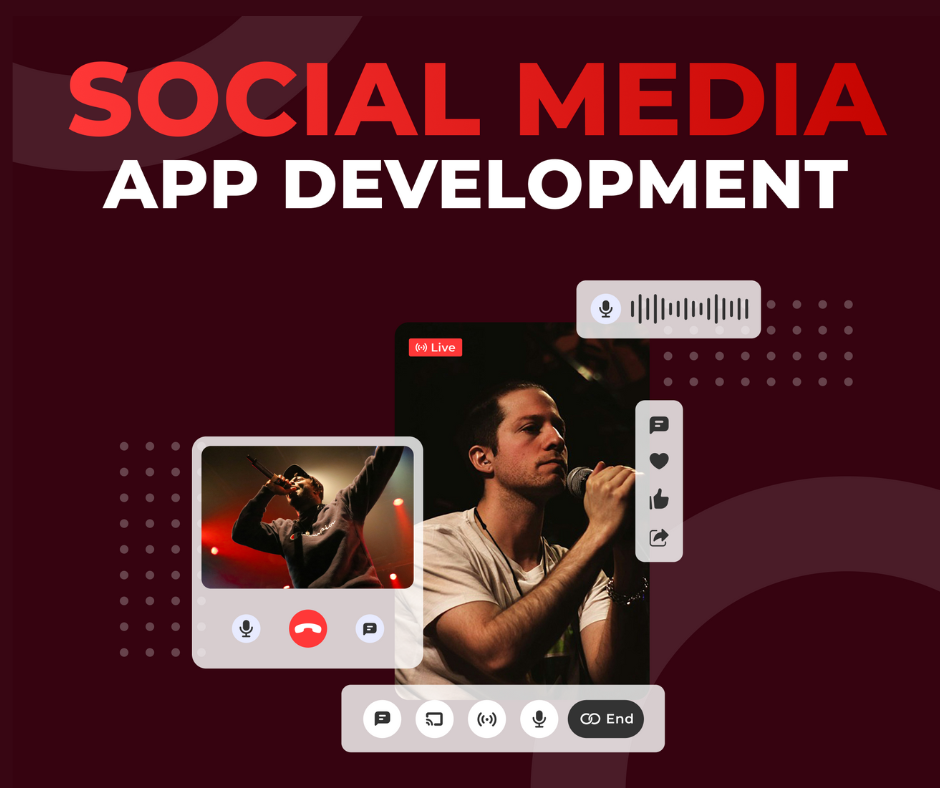Guide to Creating a Social Media Platform Like Quora: Step-by-Step

Social media platforms have become an integral part of our lives today. If you’re wondering how to make a social networking app that stands out, creating a platform similar to Quora could be an excellent opportunity. This guide will walk you through the essential steps to develop a question-and-answer-based social network app, helping you understand the process of how to create a social network app from scratch.
Step 1: Define Your Unique Value Proposition
Before diving into the technical aspects of social media app development, it’s crucial to define what makes your platform unique. While Quora focuses on knowledge-sharing through questions and answers, consider how you can differentiate your app. Perhaps you could target a specific niche or incorporate innovative features that enhance user engagement.
Step 2: Market Research and Target Audience Analysis
Conduct thorough market research to identify your target audience and their needs. Understanding your potential users will help you tailor your app’s features and user experience. Analyze existing platforms to learn from their strengths and weaknesses, giving you insights into how to make a social networking app that fills gaps in the market.
Step 3: Plan Your App’s Features
Based on your research, outline the core features of your social media platform. Some essential features for a Quora-like app include:
-
User profiles and authentication
-
Question posting and answering capabilities
-
Search functionality
-
Upvoting and downvoting system
-
Commenting and discussion threads
-
User follow/unfollow options
-
Notifications
-
Content moderation tools
Step 4: Choose the Right Technology Stack
Selecting the appropriate technology stack is crucial when learning how to create a social network app. Consider factors such as scalability, performance, and development speed. Some popular technologies for social media app development include:
-
Backend: Node.js, Ruby on Rails, or Django
-
Frontend: React, Angular, or Vue.js
-
Database: MongoDB, PostgreSQL, or MySQL
-
Cloud services: AWS, Google Cloud, or Microsoft Azure
Step 5: Design the User Interface and Experience
Create an intuitive and visually appealing user interface (UI) that aligns with your brand identity. Focus on delivering a seamless user experience (UX) that encourages engagement and makes it easy for users to navigate your platform. Consider hiring a professional UI/UX designer or partnering with a social media app development company to ensure a polished final product.
Step 6: Develop the Minimum Viable Product (MVP)
Start by building an MVP that includes your app’s core features. This approach allows you to test your concept with real users and gather valuable feedback before investing in full-scale development. When learning how to make a social networking app, it’s essential to prioritize features that deliver the most value to your users.
Step 7: Implement Security Measures
Security is paramount in social media app development. Implement robust security measures to protect user data and privacy, including:
-
End-to-end encryption for user communications
-
Secure user authentication and authorization
-
Regular security audits and vulnerability assessments
-
Compliance with data protection regulations (e.g., GDPR, CCPA)
Step 8: Integrate Analytics and Monitoring Tools
Incorporate analytics tools to track user behavior, engagement metrics, and app performance. This data will help you make informed decisions about future improvements and feature additions. Consider using tools like Google Analytics, Mixpanel, or custom solutions provided by your chosen social media app development company.
Step 9: Beta Testing and User Feedback
Before launching your app to the public, conduct thorough beta testing with a select group of users. This phase is crucial in identifying and addressing any bugs, usability issues, or performance problems. Encourage beta testers to provide detailed feedback, which you can use to refine your app further.
Step 10: Launch and Marketing Strategy
Develop a comprehensive marketing strategy to promote your social media platform. Consider the following tactics:
-
Social media marketing campaigns
-
Influencer partnerships
-
Content marketing and SEO optimization
-
App store optimization (ASO)
-
Paid advertising (Google Ads, Facebook Ads)
-
PR outreach and media coverage
Step 11: Continuous Improvement and Updates
After launching your app, focus on continuous improvement based on user feedback and performance metrics. Regularly update your platform with new features, bug fixes, and performance enhancements to keep users engaged and attract new ones.
Step 12: Scale Your Infrastructure
As your user base grows, you’ll need to scale your infrastructure to handle increased traffic and data. Work with your development team or social media app development company to implement scalable solutions that can accommodate your platform’s growth.
Step 13: Monetization Strategy
Develop a monetization strategy to generate revenue from your social media platform. Some common monetization methods include:
-
Advertising
-
Premium subscriptions
-
Sponsored content
-
In-app purchases
-
Data monetization (within legal and ethical boundaries)
Step 14: Community Management and Moderation
Implement effective community management and content moderation practices to maintain a positive and engaging environment for your users. This may include:
-
Developing clear community guidelines
-
Implementing automated content filtering systems
-
Hiring moderators to review flagged content
-
Encouraging user-driven moderation through reporting features
Step 15: Expand to New Markets and Platforms
Once your social media platform gains traction, consider expanding to new markets or platforms. This could involve creating mobile apps for iOS and Android, developing a web version, or localizing your app for different languages and regions.
Conclusion:
Creating a social media platform like Quora is a complex but rewarding process. By following this step-by-step guide, you’ll be well-equipped to tackle the challenges of social media app development. Remember that success in this competitive landscape requires ongoing dedication, innovation, and a deep understanding of your users’ needs.
Whether you choose to build your app in-house or partner with a social media app development company, focus on delivering value to your users and fostering a vibrant community. With persistence and the right approach, your social networking app could become the next big platform in the digital world.



